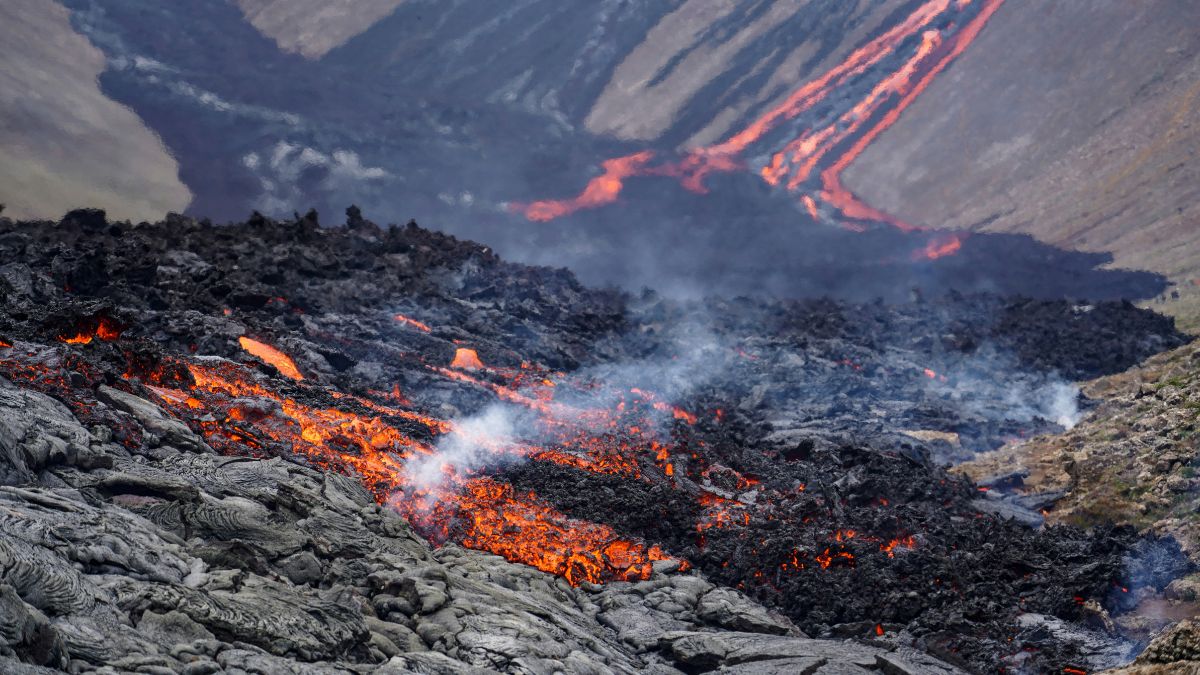Science
The Satellite Swarm Is Now a Threat, NASA Warns
17 December 2025

These rocks predate the continents. When Earth was just a fiery ball of magma, they already existed. Now, MIT scientists confirm these relics survived 4.5 billion years—they remember the very moment how Earth was formed. This groundbreaking discovery reveals new secrets about our planet's true origin.
Until now, geologists believed that no rocks from the “proto-Earth” era survived. This was the period when Earth was an unstable, spinning ball of molten rock with a chemical composition vastly different from what we know today.
However, researchers from MIT and several partner institutions examined samples from Greenland, Canada, and Hawaiian volcanoes. A subtle chemical difference related to potassium provided clear evidence: these rocks date back to the planet’s earliest moments, roughly 4.5 billion years ago. Nature Geoscience published the results of this analysis.
The early Solar System was a swirling disc of gas and dust that eventually clumped together into the first meteorites. These then merged, creating the proto-Earth and neighboring planets. Less than 100 million years later, a Mars-sized object slammed into the young planet.
Scientists simply call this moment the “Giant Impact.” This collision completely changed the proto-Earth’s interior, ushering in a new era for our planet. According to some theories, this is also when the Moon was created, as enough material broke off from Earth to form our natural satellite.
Previously, researchers assumed that the original proto-Earth material was entirely transformed during the impact. But the new study shows that some of it survived. So, how did scientists prove it?
The key to the discovery was a subtle imbalance in potassium isotopes within the rock samples from Greenland, Canada, and Hawaiian volcanoes. Isotopes are slightly different versions of the same element, varying in the number of neutrons. On Earth, 39K and 41K are the most dominant potassium variants, while 40K occurs in negligible amounts.
It turns out the analyzed samples have an even smaller share of 40K than most rocks found on Earth. This could only mean one thing: they originated from the proto-Earth period. As demonstrated by the researchers’ simulations, it was the meteorite impacts that ended this era which increased the 40K content in the Earth’s crust to the level geologists know today. The samples examined retained this isotope deficit, suggesting they survived billions of years in their original form.
This discovery allows scientists to look back into the deepest history of our planet. These materials were formed before the Giant Impact transformed Earth’s chemical composition. Therefore, they can reveal crucial details about how Earth was formed and what our globe was originally made of. The MIT team’s analysis has already yielded its first breakthrough.
The chemical signature of the analyzed rocks does not precisely match any known meteorite group that impacted Earth during that period.
“Scientists have tried to reconstruct Earth’s initial chemical composition by combining the compositions of various meteorite groups,” says Nicole Nie from MIT, one of the study’s authors. “However, our discovery suggests that the current meteorite catalog is incomplete.” The chemical analysis of these samples opens the door to even more accurately mapping our planet’s history—from a time when not only humans but all life was absent.
Geological and chemical research gives a fascinating insight into Earth’s earliest beginnings.
Read this article in Polish: Niewiarygodne odkrycie MIT. Skały z czasów, gdy świat był kulą magmy